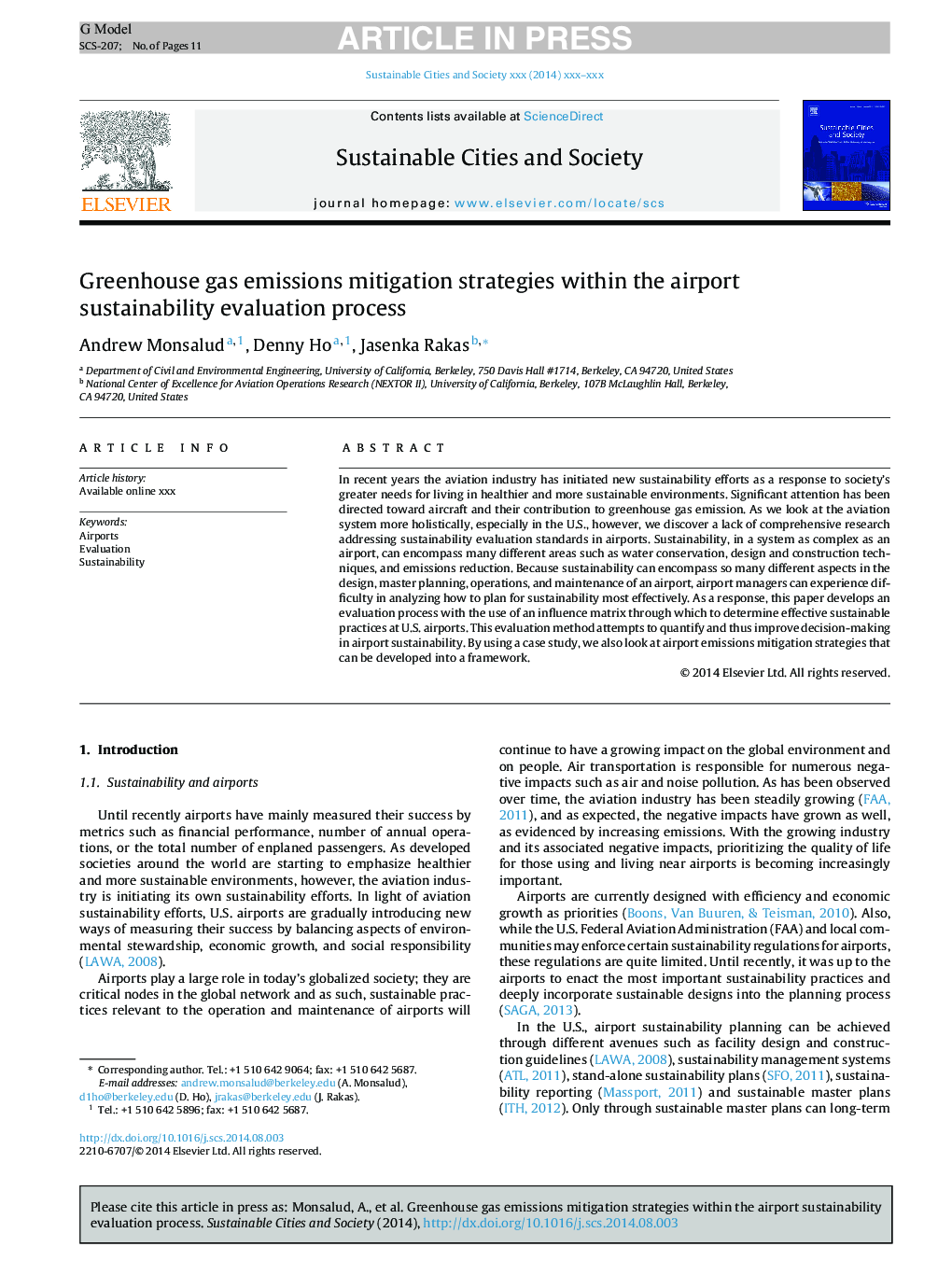| Article ID | Journal | Published Year | Pages | File Type |
|---|---|---|---|---|
| 6776531 | Sustainable Cities and Society | 2015 | 11 Pages |
Abstract
In recent years the aviation industry has initiated new sustainability efforts as a response to society's greater needs for living in healthier and more sustainable environments. Significant attention has been directed toward aircraft and their contribution to greenhouse gas emission. As we look at the aviation system more holistically, especially in the U.S., however, we discover a lack of comprehensive research addressing sustainability evaluation standards in airports. Sustainability, in a system as complex as an airport, can encompass many different areas such as water conservation, design and construction techniques, and emissions reduction. Because sustainability can encompass so many different aspects in the design, master planning, operations, and maintenance of an airport, airport managers can experience difficulty in analyzing how to plan for sustainability most effectively. As a response, this paper develops an evaluation process with the use of an influence matrix through which to determine effective sustainable practices at U.S. airports. This evaluation method attempts to quantify and thus improve decision-making in airport sustainability. By using a case study, we also look at airport emissions mitigation strategies that can be developed into a framework.
Keywords
Related Topics
Physical Sciences and Engineering
Energy
Renewable Energy, Sustainability and the Environment
Authors
Andrew Monsalud, Denny Ho, Jasenka Rakas,
